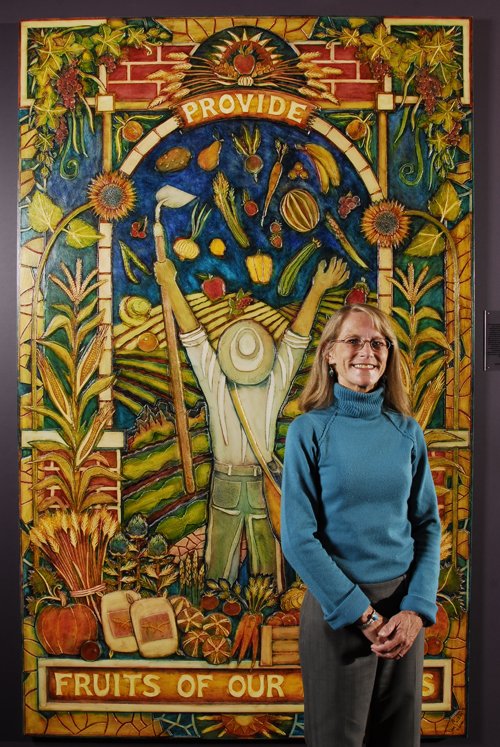 In 1983, Oregon Food Bank CEO Rachel Bristol began her career battling hunger as an AmeriCorps volunteer, helping develop the state’s burgeoning food bank system. Now 26 years later, Bristol leads Oregon’s $50 million food bank network, whose 106 employees, 25,000 volunteers and 915 member agencies help feed more than 210,000 people every month with emergency food boxes, serve millions of emergency meals and help an additional 87,000 people through programs at daycares and senior centers. But Bristol isn’t satisfied with the 58 million pounds of food that moved through the statewide system last year, not while the number of people seeking emergency food is at record levels.
In 1983, Oregon Food Bank CEO Rachel Bristol began her career battling hunger as an AmeriCorps volunteer, helping develop the state’s burgeoning food bank system. Now 26 years later, Bristol leads Oregon’s $50 million food bank network, whose 106 employees, 25,000 volunteers and 915 member agencies help feed more than 210,000 people every month with emergency food boxes, serve millions of emergency meals and help an additional 87,000 people through programs at daycares and senior centers. But Bristol isn’t satisfied with the 58 million pounds of food that moved through the statewide system last year, not while the number of people seeking emergency food is at record levels.
|
In 1983, Oregon Food Bank CEO Rachel Bristol began her career battling hunger as an AmeriCorps volunteer, helping develop the state’s burgeoning food bank system. Now 26 years later, Bristol leads Oregon’s $50 million food bank network, whose 106 employees, 25,000 volunteers and 915 member agencies help feed more than 210,000 people every month with emergency food boxes, serve millions of emergency meals and help an additional 87,000 people through programs at daycares and senior centers. But Bristol isn’t satisfied with the 58 million pounds of food that moved through the statewide system last year, not while the number of people seeking emergency food is at record levels.
What is the biggest challenge facing the Oregon Food Bank?
Our biggest challenge is growing the food supply at a pace that can keep up with the growing need. We are not meeting our goals for growing the food supply through donated sources. We’re just keeping our noses above water by buying a lot of food.
How is the OFB securing additional food and financial resources?
Oregon Food Bank used some of its strategic plan funds to launch a program called Farmers Ending Hunger. That group is working directly with farmers who commit to planned production for the food bank. Wheat growers donate wheat that will produce baking mix and dairy farmers donate “retired cows” which brings in ground beef. We’re investing a significant amount of capital equipment in Fresh Alliance, a retail recovery program which is kind of the last untapped low-hanging fruit.
You’ve gotten creative with the partnerships you’ve formed.
Back in the early 1990s, the first time the USDA commodities took a major nosedive, we had to find ways to handle more direct product from the farm, more fresh product, more frozen product. We began thinking of food donations as not just in and out but as ingredients. Years ago we would have said we can’t get anyone to take a 50-gallon drum of tomato paste. But we have developed partnerships over time so now if we get a donation like that we can turn it into tomato soup or turn French fries into potato soup.
Which organizations have been some of your strongest partners?
There are a number: Fred Meyer, Safeway, NORPAC Foods, Pacific Natural Food, NW Natural, Montecucco Farms, Pendleton Wheat Growers, USF Reddaway Trucking and Henningsen Cold Storage. In just about every aspect of this complex system, there is an element of donation involved in getting the job done.
Will any of the 915 member agencies likely close?
We always live in fear of that. As things tighten up it may be an impetus for several small programs to come together to create improved access. That could result in some improved service or ways to better manage the flow of inventory.
How will the economy affect your five-year plan which calls for increasing supplies and Oregonians served?
We are six months into this strategic plan. It seems too early to go back and rewrite it. But we have recognized a crisis, and that’s why we can’t wait five years to grow our inventory by 10 million pounds. We need those extra million pounds a month now.


